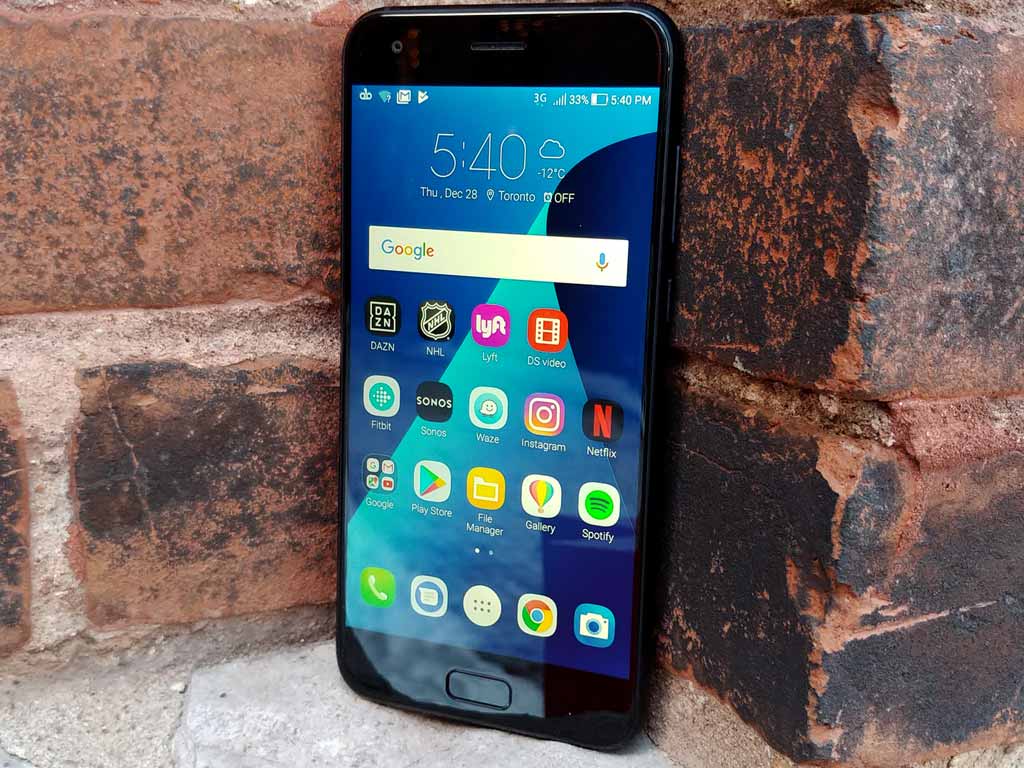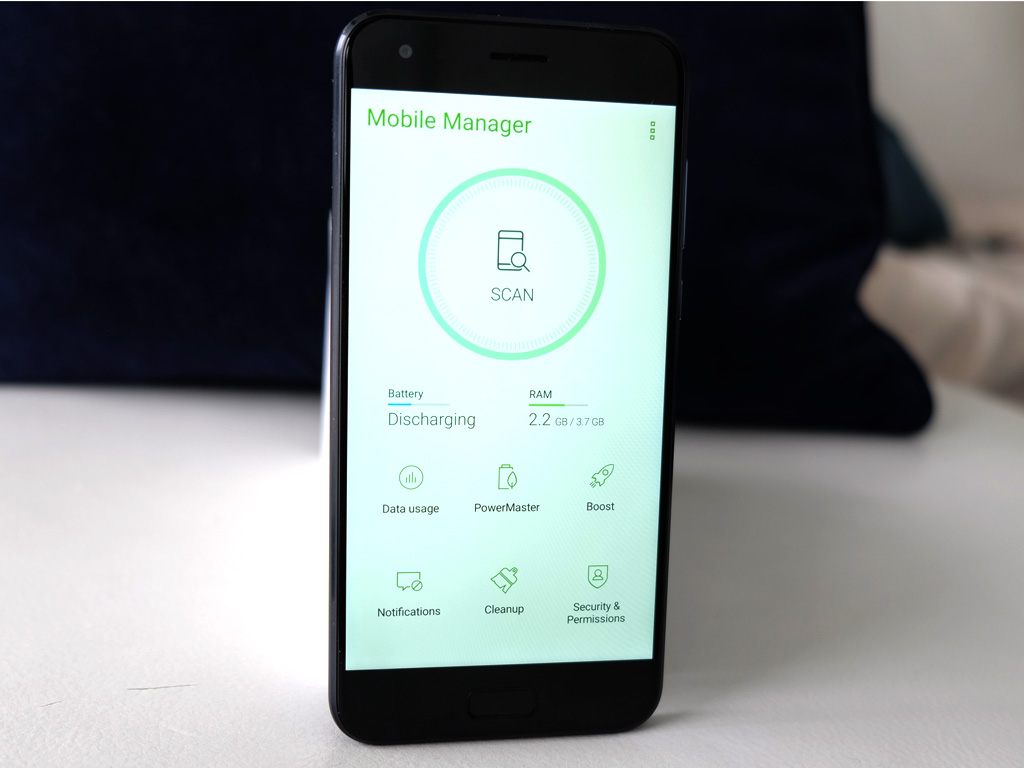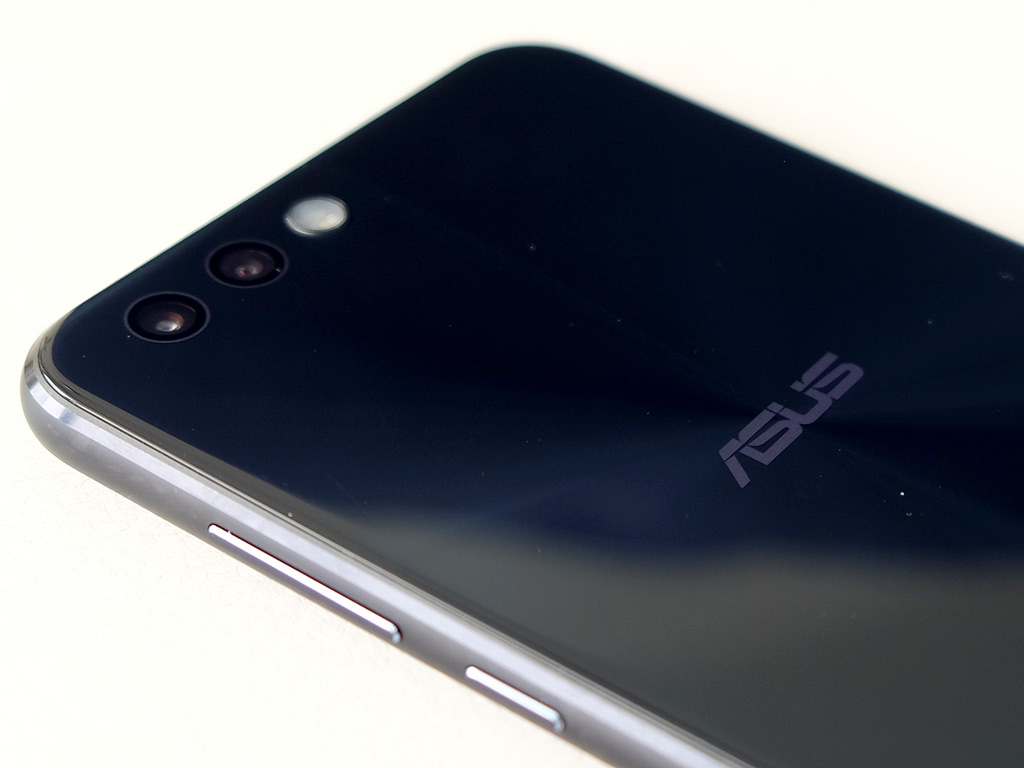
Asus Zenfone 4Display: 5.5-inch 1080p IPS display with 401 pixels per inch |
Asus comes back again with a trio of new smartphones, with the Zenfone 4 leading the charge as the most compelling of the bunch.
Since Asus started experimenting with different iterations of the same phone last year with the Zenfone 3 and Zenfone 3 Zoom, there may be some confusion over what’s happening this time. The Zenfone 4 is the company’s mid-range handset, in the middle between the premium Zenfone 4 Pro and the affordable Zenfone 4 Max.
While I tried all three, this review focuses on the Zenfone 4. I refer to the others where necessary for a frame of reference.
Design
It’s not always evident which direction Asus truly wants to go in when it comes to design. After going with glass on the front and back for the Zenfone 3, it chose to go with metal on the back for the Zenfone 3 Zoom. The Zenfone 4 has glass on the back, though the fingerprint sensor has been moved to the front as part of a touch home button.
For the most part, this phone strongly resembles the basic tenets of its predecessor’s build. The form factor is very similar, and its uses the same IPS display. The Zenfone 3 Zoom used an AMOLED display, which the Zenfone 4 Pro also uses. I’m noticing a pattern.
The phone’s spec sheet suggests a device of compromise, and it’s very much like that in practice. Asus went with the Snapdragon 630 processor, keeping it current and sticking with a solid mid-range chipset. You get 4GB of RAM and 64GB of internal storage, which you can expand on with a microSD card—all the way up to 2TB, if you like.
The 5.5-inch IPS display is 1080p—not the higher resolution one might expect from a device nowadays. But it suits the device’s mid-range status, so is acceptable under those auspices. Bearing in mind that the Pro version also has 1080p resolution, the trade-off doesn’t seem so bad. More on the screen later.
Dual lenses in the rear anchor the camera with a 12-megapixel main lens, and 8-megapixel wide-angle lens. To my mind, Asus has been underrated in this particular area, having considerably improved performance going back to the Zenfone 2. It takes another good stride forward here—provided you shoot under the right conditions.
Software
I admit, I was disappointed to see the Zenfone 4 come out running on Android Nougat when 8.1 Oreo has been released. Android updates for all phone manufacturers, save for Google, always require patience because there is no real timeline. Asus has already confirmed the phone will get the update, but as of this review, it hadn’t happened yet.
Despite that, the phone’s software is really more a reflection of Asus’ ZenUI interface. The company has backtracked a little over the last two years, trying to reel back the excesses without losing the ZenUI identity.
Smart moves include cutting the number of preloaded apps, and allocating a few of the good ones to the settings shortcuts in the notification pane. For example, Asus put Bluelight Filter, Power and Boost, FM Radio and AudioWizard in there. Bluelight reduces the level of blue light in the screen. Power and Boost is necessary for optimizing the phone’s operation and minimizing any memory leaks. FM Radio is great for listening to local radio without data. AudioWizard is decent for listening to music with a preset EQ.
Asus has been burdened before by memory leaks caused by software, where long-running apps that were closed never returned the memory they used baxk to the RAM. Power and Boost helps cut that down, though it is a manual process. I can’t be totally certain there are no leaks, but I can say I didn’t notice anything unusual.
The Mobile Manager app is another good one Asus includes, except its usefulness is tied to the potential for problems on the phone. There are ways to conserve battery life, optimize memory, track data usage and otherwise do a check on the system.

Performance
The Zenfone 4 proved to be a sturdy device, overall. I streamed video and music, played games, took plenty of photos and browsed a lot. It handled all that quite well, never really forcing me to manage memory usage.
For the average user who wants a serviceable device that does well in moderate usage situations, the Zenfone 4 is capable. It excels most when it has to handle one task at a time, though I don’t point that out as a warning. Switching apps is fine. The phone accorded itself well when I tried to push it to test performance.
ZenUI is pretty omnipresent, especially in how it changes the look and feel of the device. If you’re coming as a previous Asus user, you’ll be right at home. Other Android users will face an adjustment period, but to be fair, I would say the same about many other Android handsets with proprietary overlays.

Camera
Asus has taken good steps forward, producing one of the best mid-range cameras the last two years. The Zenfone 4 continues that tradition, though it’s not quite a leap forward in this instance. Both rear lenses are capable of capturing sharp, vibrant images when facing good lighting. Colours are nicely saturated, with fast focusing all but ensuring subjects are sharp.
Gone are the litany of shooting modes Asus always included in its camera app. Here, they cut it down to eight, including a Pro mode, timelapse and super resolution. Everything in there is an Asus staple, going back to the Zenfone 2. Getting rid of all the others smartly streamlines what was previously a crowded camera mode lineup.
Pro mode is the standout, yet again. I generally defer to any manual control mode when it’s available on a phone. It enables you to adjust shutter speed, ISO, white balance, exposure and focusing.
That mode became more integral when shooting in low-light or at night. Asus went with an f/1.8 aperture for the main 12-megapixel lens, allowing a good amount of light in, yet producing so-so results in Auto mode. To illuminate a subject, Asus ramped up the ISO, thus inviting noise to creep into the shot. Pro mode can better control that, but I found best results using a slower shutter speed on a flat surface. Even better if I used a timer to not touch the phone at all.
That scenario isn’t always realistic when trying to snap a photo in low-light, but I would recommend learning Pro mode to gain more confidence.
It applies to the 120-degree wide-angle lens too. It was very useful when shooting a wider scene, including with video.
Battery life
The Zenfone 4’s 3300mAh battery is noticeably smaller than the Zenfone 3 Zoom’s monstrous 5000mAh. As such, this phone couldn’t match that kind of longevity, even with a more efficient processor on board. Despite that, the phone held up well in my tests. Not as well, mind you, but well enough to easily last a full day.
Final thoughts
If you’re looking to stay within a budget that can’t go as high as some flagship phones—but you want something capable, the Zenfone 4 makes its case. It’s not the best mid-range phone I’ve tried, but I do see it as better overall value when compared to the Zenfone 4 Pro and Zenfone 4 Max. It does far more than the Max, and most of what the Pro can do.
The Asus Zenfone 4 is available now. You can also check out the Zenfone 4 Max and Zenfone 4 Pro, also available now.

















Great, honest,succinct review
i went out and bought one
Comments are closed.